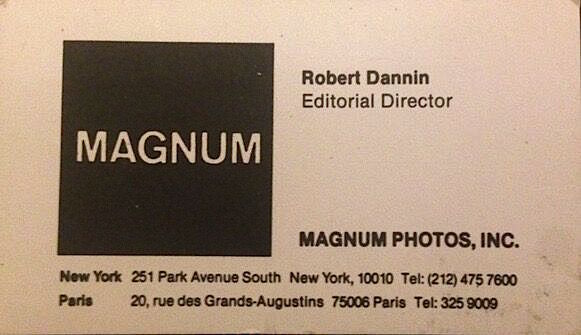 [Editor’s Note: Here we continue “The Dannin Papers,” a series of Guest Posts by Robert Dannin, who served as Editorial Director of Magnum Photos from 1985-90.
[Editor’s Note: Here we continue “The Dannin Papers,” a series of Guest Posts by Robert Dannin, who served as Editorial Director of Magnum Photos from 1985-90.
This second chapter — Dannin’s first-hand observations of the evolution and impact on the profession of the “A Day in the Life of …” book series (DITLO) as conceived and masterminded by Rick Smolan — appears in seven installments, of which this is the sixth. Click here for Part 5; click here for Part 7. — A. D. C.]
•
The Assassination of Photography:
The Plot to Hack Reality (f)
by Robert Dannin
… A Day in the Life of China was published with a disclaimer attesting to a split between Collins, the publisher, and the mainland Chinese government-front organizations.
Lest one mistake a dispute over the two controversial pictures as heroic opposition to the forces of repression, the entire book is a broad sop to press censorship. It reflects the same mechanical layout of predictable landscapes and anodyne street photography of the preceding books. Interpretive desiderata are wholly absent. Reviewing this book and its companions recently at the New York Public Library led me only to a deeper understanding of the problems associated with the management of that library’s increasingly scarce urban space for the likes of such unlovable tomes. (Under the current NYPL renovation plans, the DITLO books seem predestined for “offsite” relocation, reducing access to them.)
Of the two images in question, the first was simply an exercise in bad taste by the photographer, the editors, and the audience (mostly children) gawking at a monkey decked out as a gun-wielding PRC soldier.
Hardly a political statement, yet the censors saw in it a message of unpatriotic disdain for the Peoples Liberation Army. It might just as well have been an inconsequential distraction, or the mistreatment of a lower-order primate. Nothing else in the book reinforces any of these conclusions even remotely.
The second disputed image, showing PLA soldiers fraternizing with the photographers under a portrait of Chairman Mao in Tiananmen Square, obviously evoked the army’s sensitivity to the recent events there.
![Tiananmen Square before the storm: DITLO photographers, Tiananmen Square, April 1989, "A Day in the Life of China, pp. 208-09. [Photo: Anonymous]](https://www.nearbycafe.com/artandphoto/photocritic/wp-content/uploads/2018/02/DITLO_China_photographers_Tiananmen_Square_1989.jpg)
Tiananmen Square before the storm: DITLO photographers, Tiananmen Square, April 1989, “A Day in the Life of China,” pp. 208-09. [Photo: Anonymous]
•
However, to interpret the editors’ disclaimer, shown above, as a badge of dissent goes too far. It is no more than a frivolous attempt to preserve the editorial team’s lost integrity in the wake of the Tiananmen occupation and massacre. Indeed, it proves that from tens of thousands of photos they had nothing else to offer … except full cooperation with the Party’s original terms.
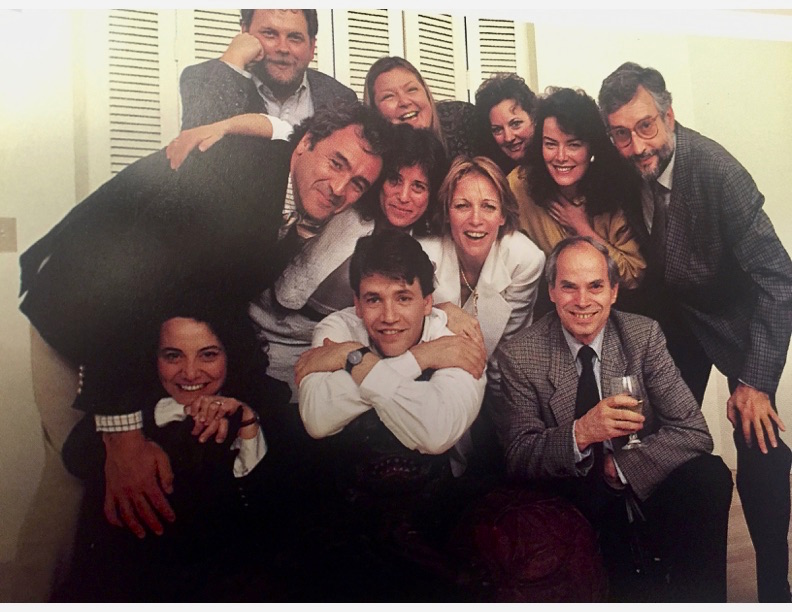
Accomplices, “A Day in the Life of China” editors, 1989 (counterclockwise from lower left): Michelle McNally (Fortune), Project Director David Cohen, Dieter Steiner (Stern), Alfonso Guitérrez Escera, Art Director Jenny Barry, Michelle Stephenson (Time), Sandra Eisert (San Jose Mercury News), George Wedding (Sacramento Bee), and Peter Howe (Life). In the middle are Susan Vermazen (New York Magazine, left) and Eliane Laffont (Sygma, right). Photo: Dana Fineman.
•
The blowback from this capitulation to manufactured reality has continued into the present. In preparing a Chinese edition of Magnum Contact Sheets (Thames & Hudson, 2014), the agency agreed to suppress Stuart Franklin’s “tank-man” strip and Marilyn Silverstone’s 1959 sequence of the Dalai Lama. Magnum’s president at the time, Martin Parr, was very candid in answering a question about the potential damage to their reputation:
Subject: Re: magnum & censorship
Date: Sun, 04 May 2014 22:01:48 +0100
From: Martin Parr
To: rdannin@
CC: Susan Meiselas, Martin Parr
The replacement of the 2 offending images was done with transparency.
There is nothing to go public on, n-one is exempt from this censorship.
Stuart Franklin was the other, and he was ok to replace this 89 image.
We either have to abide by these rules or just not get published in China, that is the bottom line.
It is even more complicated with our book about Chinese photobooks, where the whole 89 section will have to be dropped.
Martin
•
A Day in the Life of the Soviet Union (1987) and A Day in the Life of China (1989) epitomized Comrade-Citizen Parr’s idea of “transparency,” because anything resembling serious photography is blatantly missing, and “n-one” makes any bones about it. Even the verisimilitude of place — Russia, China — is questionable. As in the other DITLO books, landscapes, sheep, horses, adolescent ballerinas, and newborn babies seem interchangeable.
Both these projects occurred on the eve of tremendous historical upheavals in those countries, yet the books are breathtakingly silent on the turmoil underlying the momentous events to come. If there had been a deliberate plan to shield the brewing social unrest from view, it could not have been more completely reflected than in these books.
Journalistic malpractice is transparent from start to finish. Quiet to the point of insulting the people they purport to document, these tediously amateur productions might have been contrived by children with scissors and glossy magazines salvaged from recycling facilities in their respective countries. Any content worthy of the term photojournalism has been deferred, deleted, and suppressed in favor of the hollowed-out clichés fit to populate the storyboards of ad-agency designers.
•
The Day in the Life projects contributed to the disempowerment of the editorial process in many ways. For example, the U.S. version — A Day in the Life of America — required a bloated staff of approximately forty, including a slew of assignment editors from various newspapers and magazines. By removing the site of editing from their offices to a randomly chosen place (Denver, CO), and by recasting them as subordinates in a pop-up enterprise, the organizers effectively deskilled its own personnel. Were they paid for the event, or did they retain shares in the project?
The “team” bragged about all the freebies they secured in Denver. Free office space, free car and bus rentals, free hotel rooms, free food, free cell phones were represented as perks offered by a city and its businesses, all anxious to participate in a spectacle. Travel, accommodations, and film were secured from the sponsors, who further underwrote a general budget of $4,600,000 in exchange for “the right to use duplicate pictures.”
As a passing reference to the critical deal-making behind the entire project, this last phrase is less than a transparent statement. The photographers’ contract ceded unlimited rights to the project’s archives for a period of several years, followed by limited usage thereafter. It provided neither an accounting mechanism nor the promise of tear sheets. How could it? Day in the Life was not a permanent business. There was no indication of the terms and liabilities existing between the organizers and Collins, the publishers. Were they salaried employees or freelance contractors?
 U.S. sales of 200,000 copies made for substantial royalties. What was the photographers’ cut? Also, the list of stock photo agencies involved in the U.S., France, Canada, Germany, Hong Kong, Italy, Japan, UK, and Spain presumed worldwide distribution of the outtakes with no explanation of how they were divvied up, who paid for duplicates, and distribution and reporting of sales. Did photographers have the right to retrieve their originals? If so, who assumed those expenses?
U.S. sales of 200,000 copies made for substantial royalties. What was the photographers’ cut? Also, the list of stock photo agencies involved in the U.S., France, Canada, Germany, Hong Kong, Italy, Japan, UK, and Spain presumed worldwide distribution of the outtakes with no explanation of how they were divvied up, who paid for duplicates, and distribution and reporting of sales. Did photographers have the right to retrieve their originals? If so, who assumed those expenses?
Many of these questions applied to the picture-agency business generally; in a subsequent chapter I will examine issues of possession and ownership associated with corporate raiding by Corbis and Getty during the 1990s. Yet here in the DITLO enterprise one had an agency by any other name, although without a fixed address, officers, or any rules whatsoever.
•
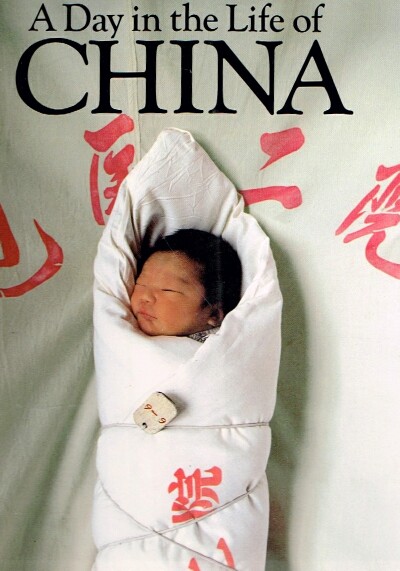 The nefarious consequences of these exercises are even more striking from the current perspective of economic disruption. Mythologized widely as the creative destruction necessary to a vibrant entrepreneurial culture, new consumer services based on crowd-sourcing and algorithms deliver huge profits to investors while herding professionals into the arena of anonymous content providers barely earning their subsistence. If the shocking decline in the value of images is bitter fruit to photographers who have spent decades schlepping their gear around the world in the face of danger and uncertain outcomes, it can be no less discouraging to millennials for whom the allure of using a compact machine to translate light into one’s personal vision now appears unviable over the long term.
The nefarious consequences of these exercises are even more striking from the current perspective of economic disruption. Mythologized widely as the creative destruction necessary to a vibrant entrepreneurial culture, new consumer services based on crowd-sourcing and algorithms deliver huge profits to investors while herding professionals into the arena of anonymous content providers barely earning their subsistence. If the shocking decline in the value of images is bitter fruit to photographers who have spent decades schlepping their gear around the world in the face of danger and uncertain outcomes, it can be no less discouraging to millennials for whom the allure of using a compact machine to translate light into one’s personal vision now appears unviable over the long term.
Yet, bad as it is for the bottom line, deprofessionalization has altered the ethos of photography through a systematic deconstruction of visual authority. Swathes of reality have been surrendered to the gaze of amateurs and sighted robots. At cosmic distances from our planet the latter techniques are logical and yield spectacular results. Closer to home, though, we see less every day despite the bombardment of images swirling across the screens of our phones, tablets, and computers. Robotic cameras generate low value images and are thus assigned predictable tasks like staring at intersections or watching your front door. Equally banal images are evident throughout the Day in the Life series.
The sheer volume of images generated today defies all human attempts to curate meaning, whereas an identifiable, sourced photo seldom penetrates the infosphere without an extraneous helping hand. But who can trust the editorial reliability of that process any longer?
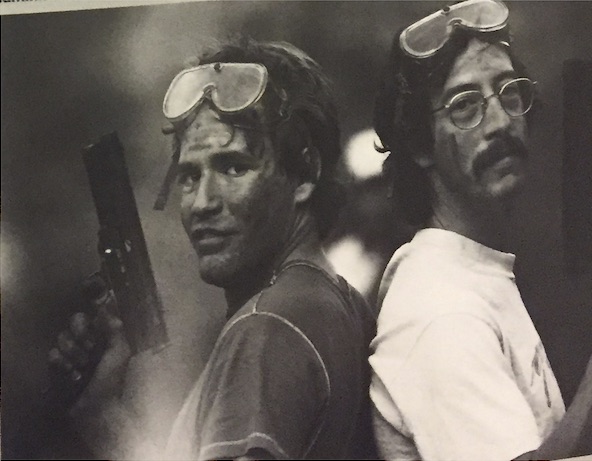
Triggermen: David Cohen (l) and Rick Smolan (r) at an unidentified paintball park. Photographer unknown.
The self-serving narratives in their books cast Day in the Life orchestrators Rick Smolan and David Cohen as smooth operators conducting guerrilla actions in the stodgy photo industry by harnessing diverse means to create a worthy spectacle. In A Day in the Life of America, for example, they report figures to prove their skills at commandeering the mainstream media, proudly citing the twelve camera crews from CBS, eighty-three local affiliates feeding ABC’s 20/20 coverage, and twenty crews for a joint production at PBS and National Geographic Television. To muster such capacity for the sake of a non-event was a mark of uncommon prowess for these cool cats, sweet music to the ears of the project’s corporate sponsors, and proof of concept to advertisers who are constantly hunting for new ways to capture an audience.
•
Suddenly, on April 26, 1986, a mere six days before the Day in the Life of America event, a distant catastrophe struck — the explosion and meltdown of the Chernobyl nuclear plant. The earth-shaking news prompted a momentary crisis in Denver. “‘My God,’ said Cohen, ‘what if the Russians give all our photographers visas? We’ll lose all of them.'”[1] A serious, real event threatened to disrupt the disruption, thus revealing the fragile legitimacy of an assignment so devoid of substance that it left another photographer — Jean-Pierre Laffont — exulting, without a hint of irony, about his own instant celebrity: “I had my picture taken, I was on the TV, there was an article about me in the newspaper.”[2]
Entrepreneurship undisguised by any pretense to journalism was baked into the Day in the Life paradigm, not only in the superficiality of its origins among San Francisco’s technophiles but, more deeply, in the quest for profits while conceding the rest — esthetics, syntax, semantics, emotions, accuracy — for a piñata stuffed with penny candy and meaningless trinkets. Profits mattered above all else, über alles, the trademark/slogan of the company most representative of today’s “sharing” economy. Separated in conception by three decades, the affinities of Uber to Day in the Life are apparent in the way each seized the concept of a common experience to trash labor, extinguish the line separating amateurs from professionals, and funnel profits to the top.
 The Uber ride-sharing app is a versatile tool, useful in shielding the company from regulations through the phony claim that its business is information instead of transportation, and mesmerizing in its capacity to involve its users in online virtual action.[3] Once connected the device becomes a handheld panopticon, mapping the activity of all nearby Uber-equipped vehicles and following the progress of a selected driver as he or she navigates toward the pickup address.
The Uber ride-sharing app is a versatile tool, useful in shielding the company from regulations through the phony claim that its business is information instead of transportation, and mesmerizing in its capacity to involve its users in online virtual action.[3] Once connected the device becomes a handheld panopticon, mapping the activity of all nearby Uber-equipped vehicles and following the progress of a selected driver as he or she navigates toward the pickup address.
Staring into the map, the user feels omniscient as the vehicle avatars scurry up and down urban streets, halting at stop signs, advancing slowly in heavy traffic. Sometimes they spin 180° or back up and then turn around., The device packs a tactile sensation into the experience by causing the phone to vibrate as the real car arrives at its destination. The overall impressions are those of precision and convenience. What could go wrong?
 Suppose a prankster orders his crew to converge on one place and simultaneously call for an Uber (Hack 1.0). Or perhaps another deviant breaks the encryption and overwrites the code with a command to make the system react as if all calls are coming from the same source (Hack 2.0). Within minutes each can produce gargantuan traffic jams that radiate throughout the city. The tie-ups and slowdowns could take hours to untangle. Horns blare, drivers curse, pedestrians wonder what the hell is going on. The cops try to move in and fail. They call for police choppers which are followed by the traffic and news helicopters, compounding risk in the crowded skies.
Suppose a prankster orders his crew to converge on one place and simultaneously call for an Uber (Hack 1.0). Or perhaps another deviant breaks the encryption and overwrites the code with a command to make the system react as if all calls are coming from the same source (Hack 2.0). Within minutes each can produce gargantuan traffic jams that radiate throughout the city. The tie-ups and slowdowns could take hours to untangle. Horns blare, drivers curse, pedestrians wonder what the hell is going on. The cops try to move in and fail. They call for police choppers which are followed by the traffic and news helicopters, compounding risk in the crowded skies.
Meanwhile the app shows the avatars swarming like bees around a non-existent hive. Nothing there. A chimera. Pinching the map reveals a wider urban perspective that is mostly blank where real events are happening. Perhaps an emergency vehicle is trying to reach someone in distress. As the din of the virtual event rises to a crescendo there are fewer and fewer witnesses to reality. Hackers have jammed the circuits with a DoS hack (Denial of Service) that jolts reality out of the frame. It is the most elementary of cyber-terrorist attacks. …
•
[1] Day in the Life of America, p. 255.
[2] Ibid., p. 260.
[3] The European Court of Justice in Brussels has rejected this fiction in a recent ruling. Henceforth Uber will be subject to the same regulations and taxes applied to transportation companies in all member countries (“EU ruling on Uber opens up company to new claims,” Financial Times, 20 December 2017).
(Part 1 I 2 I 3 I 4 I 5 I 6 I 7)
•
Text copyright © 2018 by Robert Dannin. All rights reserved.
•
(For an index of links to all posts in this series, click here.)
•
Robert Dannin holds a doctorate in linguistics and anthropology from the School for Advanced Studies in the Social Sciences in Paris. He taught at Brown University, New York University, and Suffolk University in Boston. He is co-founder and director of the Ddora Foundation, and serves as a trustee at Mount Ida College in Newton, Mass. Among his scholarly publications, Black Pilgrimage to Islam (Oxford University Press, 2002) was the first ethnography of Islamic religious conversion in America.
In 2009 Dannin was awarded an inaugural residency at the Norman Mailer Writer’s Colony. His most recent work is a biography of Jacob Schiff, the Gilded Age banker and rival to J. P. Morgan.
Dannin paid for his education by working as a cook, translator, ghostwriter, and copywriter/photo editor at Sipa Press in Paris from 1978 to 1981. He was news editor for Sygma New York and later the editorial director of Magnum, where he produced Sebastião Salgado Jr.’s “An Archaeology of the Industrial Age,” eventually published as Workers (Aperture). His other editorial credits include James Nachtwey’s Inferno (Phaidon) and the survey Arms Against Fury: Magnum Photographers in Afghanistan (powerHouse).
Dannin is the author of numerous critical essays about photojournalism. From 1995 to 1997 he served as special consultant on photography to the office of the New York Attorney General. To contact Robert Dannin, click here.


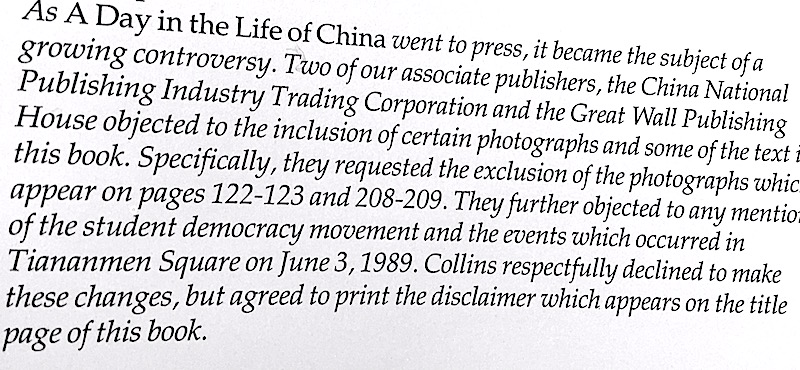
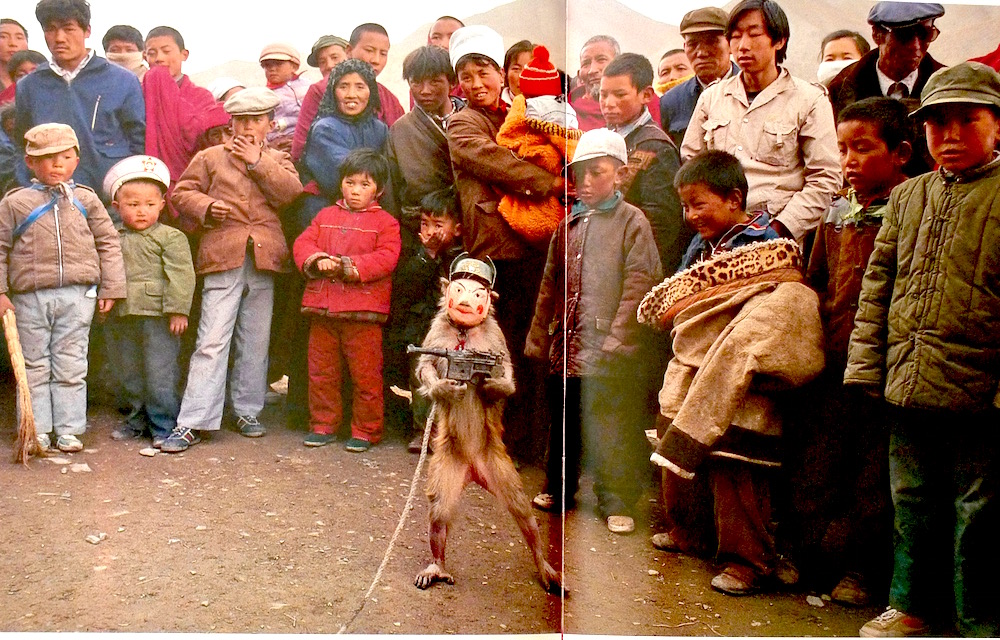

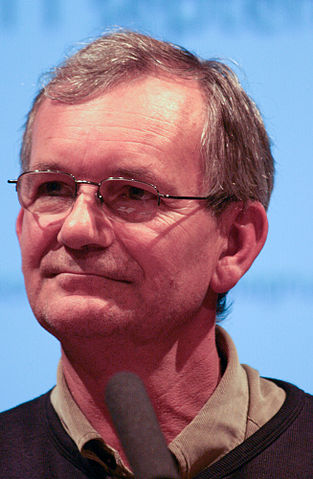
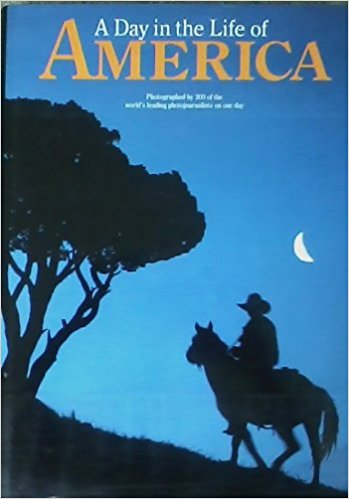







Leave a Comment